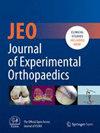Single-stage autograft revision for failed ligament advanced reinforcement system (LARS) anterior cruciate ligament reconstruction: Improved clinical outcomes at a minimum 5-year follow-up
Abstract
Purpose
To evaluate mid-term clinical outcomes and intraoperative findings in patients undergoing single-stage revision after failed ligament advanced reinforcement system (LARS) anterior cruciate ligament reconstruction (ACLR).
Methods
This retrospective study evaluated patients who underwent ACL revision surgery following initial reconstruction using the LARS device. Clinical assessments included the Tegner activity scale, Lysholm Knee score, and International Knee Documentation Committee (IKDC) scores, recorded preoperatively and at a minimum follow-up of 5 years. Preoperative imaging was conducted to assess tunnel widening, alignment, and the presence of arthritic changes. Intraoperative evaluations included arthroscopic inspection of the synovium, menisci, and cartilage. Synovial biopsies were obtained for histological analysis of inflammation.
Results
Twenty-five patients were included in the study. Clinical scores demonstrated significant improvement in Tegner activity scale (p = 0.0006), Lysholm Knee score (p = 0.0001) and IKDC score (p = 0.0001) following revision surgery, with a mean follow-up duration of 7.8 years (SD = 2.13). Preoperative imaging revealed early arthritic changes in 52% of patients. Intraoperative findings showed that all patients exhibited synovial membrane inflammation, with a 100% incidence of synovitis. Additionally, 68% of patients presented with Stage III or IV chondral lesions according to the ICRS classification.
Conclusions
Single-stage revision ACLR using autografts led to significant clinical improvement after LARS ACLR failure, with a mean follow-up of 7.8 years. All cases during revision demonstrated synovial inflammation, with a high prevalence of chondral lesions and early arthritis. While these findings may point to a potential association between synthetic grafts and degenerative joint pathology, causality cannot be established, as degenerative changes are known to occur following failed ACL reconstructions regardless of graft type.
Level of Evidence
Level IV.





 求助内容:
求助内容: 应助结果提醒方式:
应助结果提醒方式:


